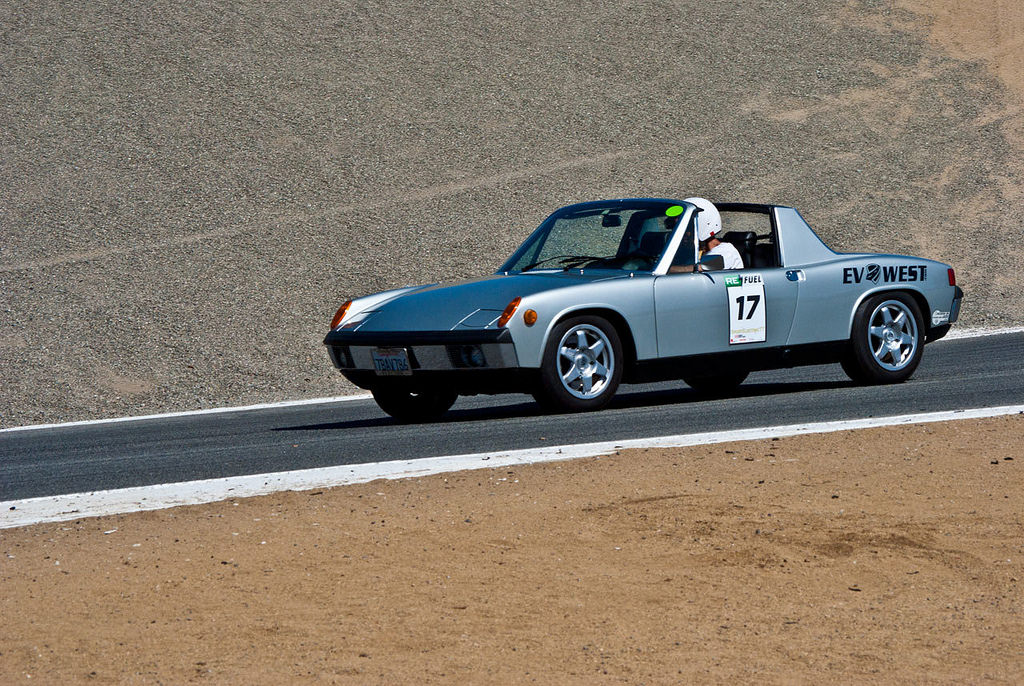The pricey, convenient appeal of converting a classic to electric power
Putting an electric drivetrain into a car not designed for that purpose takes skill, money, and the right kind of classic car fanatic. But there just might be more of those kinds of people out there then they themselves realize.
It used to be that DIY EV conversions were the only way to drive electric. Electroauto, for example, was an electric conversion parts supplier that opened its doors in 1979. Today, its website features a “What’s New” section that was last updated in April 2012.
Or take the Electric Auto Association, which formed in 1967. Long-time EV advocate Chelsea Sexton says the EAA (not to be confused with the Experimental Aircraft Association) still has dozens of chapters and it used to be mostly composed of conversion folks who used to look down on people who took the “easy route” by just buying a production EV.
“I still recall the name-calling during meetings of the LA chapter during the EV1 days,” she says, referring to the few years in the late 1990s when General Motors sold an electric car in limited markets. “The EAA still exists, but many of their members are now simply production EV drivers who see their chapter as another version of a local EV club.”
Former EAA chair Ron Freund agrees that the EAA has changed.

“The spirit of conversions still lives, but usually people who do their own quickly learn that it’s not cheaper than a used Nissan Leaf, which is so much better feature-wise than anything they could cobble together by themselves,” he says. “The EAA has de-focused on conversions since about 2011 since the quality of OEM offerings is so good.”
But not everyone wants a prepackaged solution with one of those pesky warranty things and free satellite radio for three years. Some people want things done the older-fashioned way. More and more, these are classic car owners who want to keep their cars alive.
David Benardo runs Zelectric, a conversion shop based in San Diego, California. Since opening up shop five years ago, Zelectric has focused on converting ’60s and ’70s VWs and Porsches to electric power. The conversions are not cheap, around $50,000 for the Beetles, $60,000 for the Buses, and $70,000 for the 911s. They don’t do anything newer than the 964-generation 911, according to Benardo, citing the older ones are simpler, with less wiring to move around. Zelectric has converted about 20 cars, with each one taking between 300 and 400 hours of work.
“There’s already a love affair with classic cars, but then to have something that’s dependable and turns on whenever you want it to has huge appeal,” he says. “For many people who aren’t tinkerers and who don’t want to be wrenching on their car and just want to get behind the wheel and cruise around, electric is a great way to go.”



That’s because an electric drivetrain is simpler and easier to maintain than a gas or diesel one.
“Most of the mechanical car problems were with the engines,” Benardo says. “There are still hundreds of shops that can work on the brakes and tires, which are kind of the only things that are going to require a little bit of maintenance in an EV, and even then, with the regen braking that the electric motor offers, your brakes and brake pads are only working at a fraction of what they were originally.
“Conversions have really opened the door to a whole new group of people that have always thought about owning a classic car, but didn’t want to mess with the anticipated maintenance and performance issues, especially with the VWs. They were always underpowered, rattling down the street and dripping oil and all that. That’s gone away. At the end of the day, people are in love with their classic cars, whatever they are, and this gives them a second life, and better performance and it’s better for the environment.”
Another conversion shop is EV West, which Benardo works with and called “our R&D department” because of the way they build race cars for speed and figure out what breaks and what doesn’t. “After something has proved itself reliable for a year or two, that’s when I’m interested in putting it in our cars.”


Another change that Benardo has seen in the last few years is that Tesla Model S battery modules have become more routinely available, allowing him to use them in the Porsche 911 conversions.
“The great thing there is that the battery packs are just engineered extremely well,” he says. “They take up less space in the car and are more energy dense, so the car will go further.”
Putting a battery pack from a futuristic car into a classic body just makes sense, Benardo says.
“Car people have always known that there are idiots making cars electric, but when those people find out we can take their classic car and not destroy it in any way, then double or triple performance, and allow it to be environmentally friendly, that just checks a lot more boxes that car people need to have checked,” he says.




